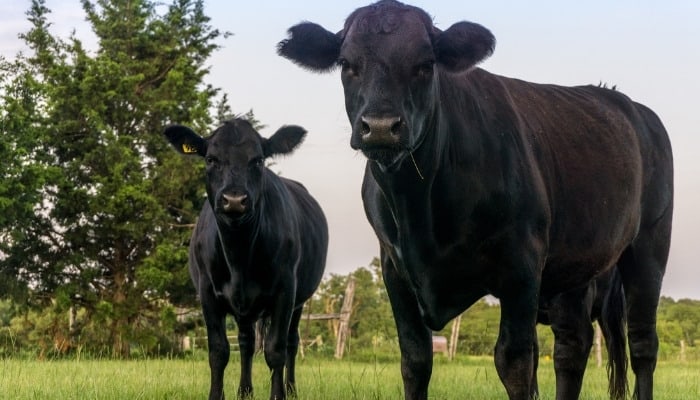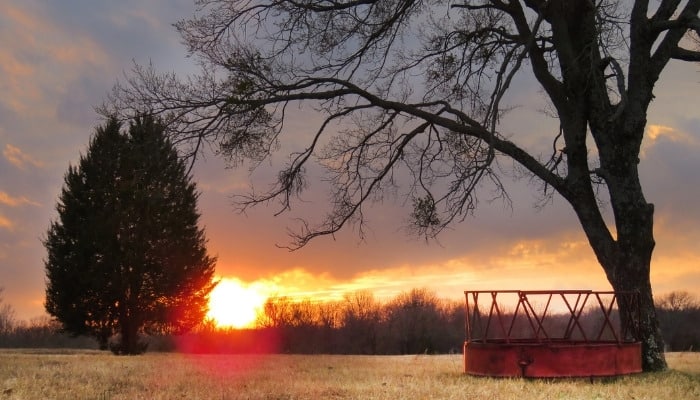Cedar trees on a cattle ranch? This could spell disaster for certain ranchers.
Besides the invasive nature of cedar trees, which tend to crowd other trees out of the pasture, they are also quite toxic, so much so that burning the wood of certain cedar species is not recommended in enclosed spaces or to cook food.
So what about cedar trees and cattle?
Are cedar trees poisonous to cattle? The berries, bark, and leaves of cedar trees contain toxins such as thujone and Melia toxins A and B that cause tremors, muscle contractions, and death if consumed in large quantities. Ingesting small amounts of the tree may cause vomiting, colic, and diarrhea.
Seeing that your pasture or farm should have more beneficial trees and fewer toxic trees, cedar trees should be removed from the property regardless of what kind of animals you keep.
Read more to find out why cedar trees and cattle don’t mix.
Cedar Trees and Cattle – What To Know
Cedar trees come in many varieties and species including white cedar, western red cedar, and eastern red cedar among others.
Unfortunately, many of these species are quite toxic to livestock, and you shouldn’t have cattle grazing around cedar trees.
What Parts of Cedar Trees Are Poisonous
The toxic chemicals in cedar trees are mainly concentrated in large quantities in both the berries and the bark. This is especially true of white cedar and eastern red cedar.
But there’s also a risk if the cattle or other animals ingest the leaves or branches of the tree.
To be on the safe side, you should consider every part of the cedar tree as toxic to the animals on the property.
Are Cedar Trees Bad for Livestock?
If you have cedar trees on your property and you’re not sure if they’re the poisonous variety or if they’re safe around your livestock, you should err on the side of caution.
Cedar trees offer few benefits to the farm or pasture and take up valuable space.
Even when they’re not toxic to your livestock, you’re not getting anything in return for keeping them growing and spreading in your pasture.
Cedar trees have an aggressive growth rate and tend to populate every available space, crowding out beneficial trees. As they spread, they limit sunlight to the pasture, killing the grass.
Cedars also burn hot and quickly, posing a serious fire hazard.
Pasture space is better dedicated to grass and other more useful plants that would nurture and feed the livestock.
Effects of Eating Cedar for Cattle

How toxic cedars are to cattle depends on which parts of the cedar tree the cattle consumed and in what quantities.
The more berries and bark the cattle ingest, the more severe the symptoms. These symptoms could include muscle contractions, colic, tremors, and, in some cases, coma and death.
However, if the cattle only consumed the leaves where Melia toxins are present in trace amounts, then the symptoms would be mild.
The cattle could experience vomiting, salivation, nausea, and diarrhea.
When Cattle Are Likely To Eat Cedar Trees
Although cedars have a full canopy by the late spring, it’s the late summer and fall when you should worry about the cattle ingesting parts of the tree.
That’s when the berries are ripe and offer the cattle a delicious, albeit toxic, treat.
Besides the berries, the cattle could eat the twigs and small branches of the cedar, which are also quite toxic, in the late spring and summer.
How To Keep Cattle Safe in Pastures With Cedars
If you have cedars in your pasture, then the safest option is to chop them down and let grass reclaim that valuable real estate.
If that’s not an option and you still want to keep the cedars, then I recommend setting up mesh wire enclosures around the dripline of each tree to keep the cattle away from the fallen leaves and berries.
You can also deadhead the low-hanging flowers in the late spring before they get pollinated to keep the trees from developing their poisonous berries.
Related Questions:
Is Cedar Poisonous to Dogs?
Cedar is relatively harmless to dogs unless they ingest the toxic berries.
Additionally, some dogs might be allergic to the aromas of the wood of cedar. In this case, you should avoid using cedar shavings and chips in the dog house.
Are Buckeyes Poisonous?
Buckeyes contain glycoside aesculin and saponin aescin, which are both highly toxic compounds. These toxins are present in high quantities in the leaves, barks, and fruits of the buckeyes.
If you or anyone else ingests any part of the buckeye tree, you should seek immediate medical help.
Conclusion
Cedar trees and cattle should not be present together in the same pasture or farm. The berries and bark of some cedar species are toxic to cattle, and if ingested they could cause coma and death.

